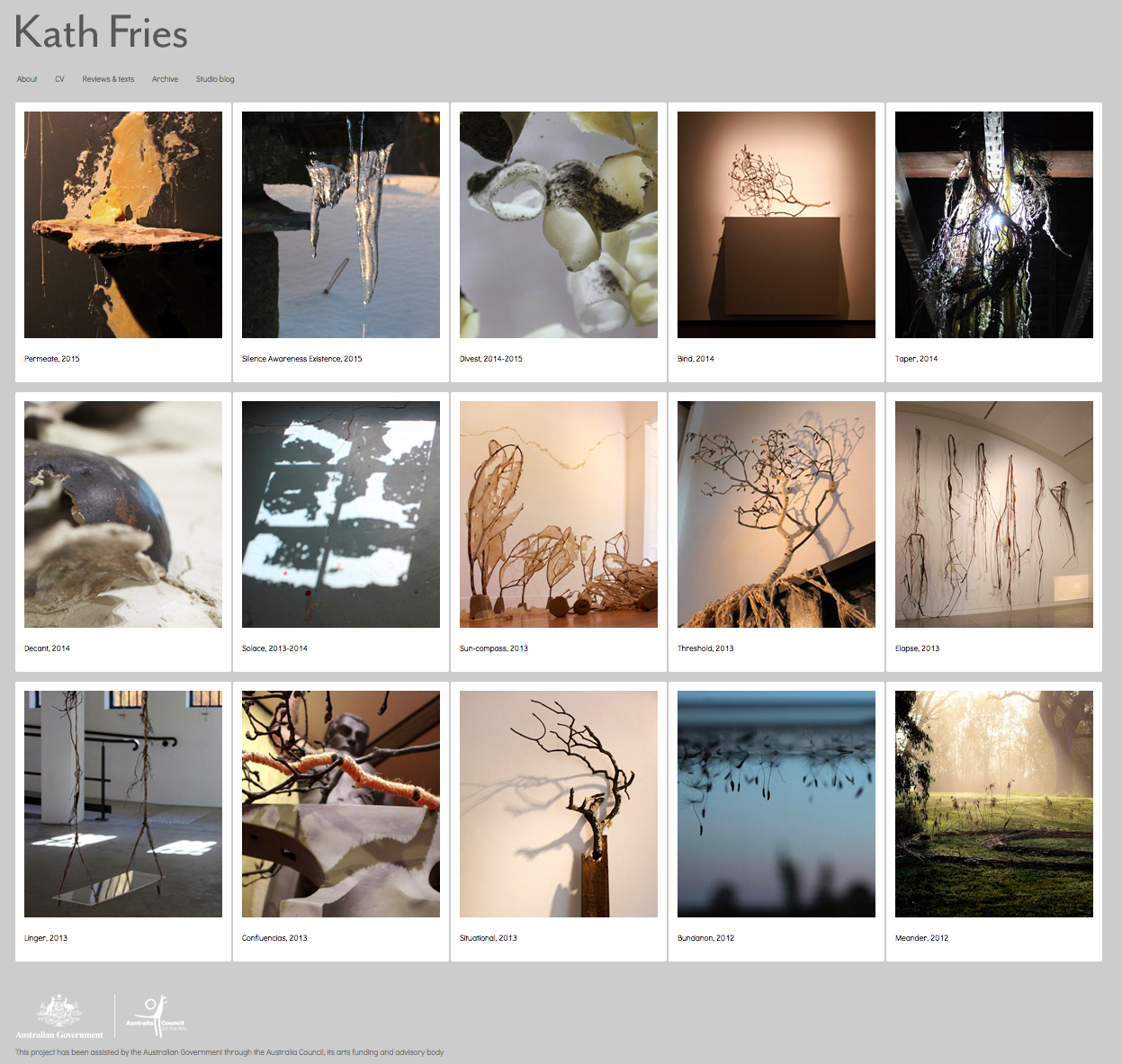 |
| Kath Fries, Decant - work in progress, 2013, paper clay and ink, FCM&G studio |
My residency project at Fairfield City Museum and Gallery responds to a couple of objects in the Museum's collection that were found on the banks of Prospect Creek. I titled this project Decant reflecting my process of pouring water. Stretching my materials to breaking point, my studio process developed intuitively as I played with ways of exploring time, enacting a tangible engagement with impermanence and fragility.
 |
| Kath Fries, Decant - work in progress, 2013, silicon moulds and paper clay, FCM&G studio |
 |
| Kath Fries, Decant - work in progress, 2013, paper clay and ink, FCM&G studio |
I cast sections of the original objects using silicon moulds, then created multiple replicas in paper clay. However, my fragmented replicas are each intentionally unique, subtly different in texture, colour and form. I decided they would not be glazed or even bisque fired, but instead remain in a semi-transient state - part of an ongoing cycle of formation, drying, breaking, dissolving, disintegration, evaporation, reforming, drying and repeating.
 |
| Kath Fries, Decant - work in progress, 2013, paper clay, FCM&G studio |
I painted, dripped and splashed my replicas with ink, alluding to traditional writing with pen and ink, and the unwritten unknown history of the original owner of the ewers. Ink was invented in China and the ewers are assumed to have belonged to one of the many Chinese markets gardeners who worked and lived on the banks of Prospect Creek 1870s-1940s. Very little is known about these agricultural workers - their historical narratives were not recorded and are now lost. The ink (symbolising these lost stories that were not written down) dried into skin-like layers on the clay surface. Washes of water wore off patches of ink skin, eventually tearing open as the flux of the clay beneath splits the surface above.
 |
| Kath Fries, Decant - work in progress, 2013, paper clay, ink and mirrors, FCM&G studio |
 |
| Kath Fries, Decant - work in progress, 2013, paper clay and ink, FCM&G studio |
Playing with notions of containment and disintegration, I placed my replicas on their sides filled with water - then waited to see how long the clay would hold. Eventually the water seeped through the weakest point and ruptured the object as the water trickled, then poured, then gushed out. When I was feeling more impatient with this process, I would continuously pour water into a replica, forcing the centre to burst open under increased pressure. Following this aggressive action the fragments and pieces were set aside to dry, semi-preserving the organic rupture lines and a sense of this somewhat unpredictable water pouring event.
 |
| Kath Fries, Decant - work in progress, 2013, paper clay, FCM&G studio |
 |
| Kath Fries, Decant - work in progress, 2013, paper clay and ink, FCM&G studio |
The shards and fragments of my replicas began to resemble the results of an archeological dig. I spread them out across tables in my studio in an unstructured process of examining, sorting, reusing and reassembling.
 |
| Kath Fries, Decant - work in progress, 2013, paper clay and ink, FCM&G studio |
 |
| Kath Fries, Decant - work in progress, 2013, paper clay and ink, FCM&G studio |
 |
| Kath Fries, Decant - shards - work in progress, 2013, paper clay and ink, FCM&G studio |
 |
| Kath Fries, Decant - shards - work in progress, 2013, paper clay and ink, FCM&G studio |
This is the second in a series of blog posts from my temporary FCM&G studio.
I would like to thank Fairfield City Museum and Gallery for this commission and the opportunity of being their first artist-in-residence. The work resulting from my residency will be exhibited in a solo exhibition, 'Decant', in the Stein Gallery at Fairfield City Museum and Gallery (cnr The Horsely Dr and Oxford St, Smithfield NSW 2164), 22 February - 12 April 2014. Opening night: Wednesday 26 February, 6.30-8.30pm
 |
| Kath Fries, Decant - work in progress, 2013, FCM&G studio |
































































%2BWhite%2C%2BBRANCH%2B3d.jpg)














.jpg)














